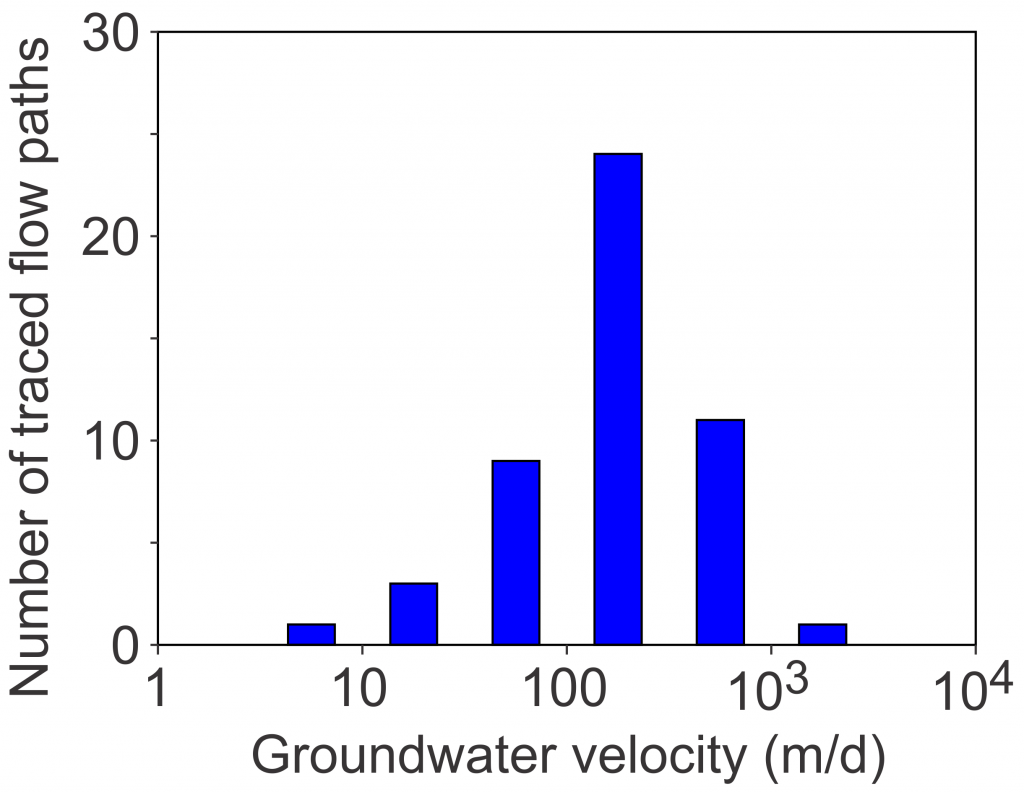
Bedrock aquifers usually have a bimodal distribution of groundwater velocities. Low matrix permeability results in low matrix velocities (<<1 m/d). In fact, a common conceptual model for bedrock aquifers is that they are dual-porosity aquifers, with the water in the matrix being static, and all the movement taking place in the fracture network. Differences in solute concentration between the matrix and the fracture network result in matrix diffusion, where there is slow diffusion of solutes into and out of the matrix.
The low effective porosity of the fracture network (0.00001 – 0.01) results in high groundwater velocities through this network. Silicate aquifers (e.g. granite, basalt, sandstone, shale) have lower average permeabilities than carbonate aquifers (e.g. limestone, dolostone), so lower velocities are expected. The figure shows groundwater velocities from a search of the global literature, which yielded only 49 tracer tests in silicate aquifers over distances >100 m. The median velocity is a 139 m/d. This is a small data set so it is unclear how representative this is of silicate aquifers, but it clearly shows the importance of preferential flow in these aquifers. There are many more tracer tests in carbonate aquifers, and velocities >100 m/d are common. For instance, results from 171 tracer tests in Ontario are shown on the web page on karst aquifers in Ontario.